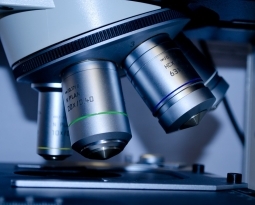Georgia Patent of the Month – July 2023
Research has shown that an early diagnosis of developmental disorders, like Autism Spectrum Disorder (ASD), leads to better long-term outcomes. Despite this, fewer than 20% of children with autism are diagnosed younger than three years old, leading to delayed intervention. This delay in diagnosis is due to the complexity in identifying the condition. There is no blood test that can be performed; instead, professionals must evaluate the child’s developmental history.
EarliTec Diagnostics Inc. is working to change this, developing improved diagnostic methods which can be implemented at a young age with reliable results. This mission has led to the development of an eye-tracking solution which evaluates an individual’s social-visual engagement.
The system, marketed as EarliPoint™ Evaluation for Autism Spectrum Disorder, uses multiple patient-side portable tablet computing devices. These devices collect eye-tracking data from patients during the presentation of a set of videos. The session data is then processed in parallel by the server to generate processed session data for each eye-tracking session. The gathered data is then compared against corresponding reference data. This comparison forms the basis for an assessment report for each patient. The report includes a visualization of the eye-tracking data overlaid on relevant moments from the video set, aggregated reference data from similar patients, and annotations describing visual stimulus content or eye-gaze patterns.
By utilizing statistical models, machine learning models, and artificial intelligence models, the processed session data is analyzed to provide accurate and objective assessments. The corresponding reference data may consist of historical eye-tracking data or results from patients with similar ages or conditions. Each assessment data point is compared against thousands of discrete measurements within this clinically validated database, ensuring accuracy in results.
The research behind the system is based on patterns detected amongst ASD and non-ASD patients’ focal habits. A typically developing child may focus on the same area of a scene in a video at the same moment about 80% of the time. These focal points are referred to as “Attention Funnels” and are clinically validated reference standards. The comparison evaluates if the patient’s focus falls within or outside of these funnels. Analyzing the overall Relative Entrainment (i.e. focus within funnels) can provide information for early identification of ASD and may even indicate level of social disability, verbal ability, and non-verbal learning.
In addition to being granted a patent, EarliPoint™ has recently been declared an FDA cleared device for use in clinical diagnosis and assessment of ASD. The assessment is simple for the patient, requiring the child only to watch a video – like scenes of other toddlers playing – while producing useful diagnostic information.
Are you developing new technology for an existing application? Did you know your development work could be eligible for the R&D Tax Credit and you can receive up to 14% back on your expenses? Even if your development isn’t successful your work may still qualify for R&D credits (i.e. you don’t need to have a patent to qualify). To find out more, please contact a Swanson Reed R&D Specialist today or check out our free online eligibility test.
Who We Are:
Swanson Reed is one of the U.S.’ largest Specialist R&D tax advisory firms. We manage all facets of the R&D tax credit program, from claim preparation and audit compliance to claim disputes.
Swanson Reed regularly hosts free webinars and provides free IRS CE and CPE credits for CPAs. For more information please visit us at www.swansonreed.com/webinars or contact your usual Swanson Reed representative.

















